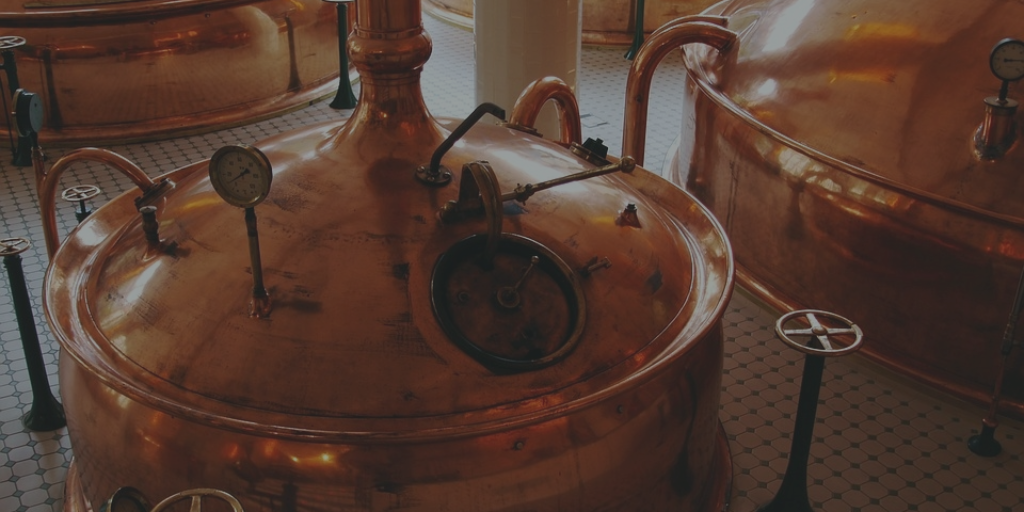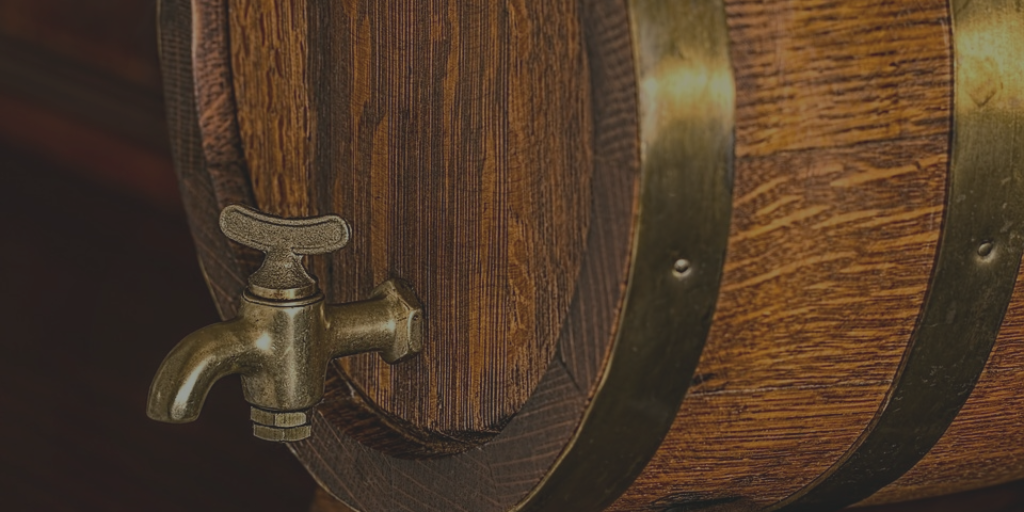Where to Spend Your Marketing Dollars on a Tight Brewery Budge
This post is contributed by Money Crashers, a website striving to develop a community of people who make financially sound decisions.
Despite growing indications of saturation in some markets, the craft beer segment’s growth continues apace. In 2015, the U.S. brewery count officially passed the previous all-time, high-water mark, set way back in 1873. According to the Brewers Association, there were more than 4,100 craft breweries in the country at the end of last year. That figure is almost certain to rise when it’s re-tallied this quarter. It’s now a question of if, not when, we’ll break through the 5,000-brewery mark.
Craft beer’s popularity is a double-edged knife, of course. New breweries can no longer count on standing out simply by virtue of being new, local, or edgy. And traction is no longer a virtual guarantee, as was the case back in the 2000’s.
New breweries need to think early, often, and intentionally about marketing. Given the financial realities of the craft brewery business, they also need to think through how to effectively allocate the limited marketing dollars in their tight brewery budget.

That brewery budget can go further than you think, as long as marketers understand they can’t compete on the same terms as the macro giants or long-established pillars in the craft scene.
“Effective marketing shouldn’t require a large craft brewery budget,” says Peter Heidorn, marketing and communications manager at Minneapolis-based Fair State Brewing Cooperative. Heidorn makes the best of his employer’s limited resources, overseeing a surprisingly robust digital program and scheduling as many tasting events as his staff can handle.
Here’s how Heidorn, as well as hundreds of other brewery marketing professionals around the United States, are making the most of their finite marketing dollars.
How to Spend Marketing Dollars on a Tight Budget
1. Learn About Your Customers – And How to Speak to Them
You’re nothing without your customers. Make sure you know who they are, what they want, and how to connect with them.
In his exhaustive look at Dogfish Head Brewery’s branding efforts, Stephen Zoeller notes that the brewery’s founders identified their target market before doing almost anything else. They determined that the archetypal consumer in the craft beer target market “typically has an average household income of $60,000, a bachelor’s degree or higher, enjoys outdoor activities, and (is) employed in a professional career.” They further broke down the demographic components of their target markets: Boomers and Generation X, and later Millennials (Millennials weren’t old enough to drink back in the mid-1990s, when Dogfish first got going).
Basically, they figured out who to market to before they started marketing — a sensible first step in a limited-resource campaign.
2. Pursue Mutually Beneficial Community Partnerships
Craft breweries, especially those built around neighborhood taprooms, need to build bridges to their communities — no matter how those communities look.
“All floods raise ships,” says Heidorn. “Give sincere support to local businesses and develop partnerships with your community, and incorporate support of those businesses across social media into your marketing mix. Working together and scratching each other’s backs doesn’t cost anything, besides your time.”

In 2015, Heidorn’s employer launched Fair State Cooperates, a charity partnership initiative. Each month, the brewery donates $1 from every growler sale — roughly 5% to 8%, depending on the brew — to a different nonprofit. It promotes this work through taproom posters and marketing emails, and relies on each partner to do the same within their networks.
Some breweries go a step farther. Kalamazoo, Michigan-based Arcadia Ales has been actively supporting local and national charities since 2005, when it donated to Hurricane Katrina relief. In a 2015 presentation, the brewery listed some fairly innovative initiatives, including private-label beers for nonprofit partners.
“That trade of support serves to strengthen those relationships and introduces your audiences — and potential new customers — to each other,” says Heidorn. “We genuinely want all of our partners to succeed. When you begin with that goal, the attitude becomes contagious for your partners and customers alike.”
3. Find and Exploit a Niche
Many craft breweries earn their keep by churning out approachable, middle-of-the-road beers. Maybe yours does too. If so, more power to you. In a Bud Light world, we need all the balanced pilsners and lightly hopped session ales we can get.
However, no matter how strong your easy-drinking lineup, it doesn’t hurt to experiment — particularly when doing so can raise your brewery’s profile, increase synergy between the front and back of the house, and perhaps even give your brewery budget some padding.
First, canvas your local and distribution markets with your brewery ads. What are other brewers doing well and in volume? What’s not being done? What would you, and the committed customers you (hopefully) know think like you, like to see it done better or differently?
Then, sit down with your brewing team and figure out how to make it happen. Do you have the discipline to launch a sour program? Can you set aside the space and time to barrel-age? How outside the box do we want to go with old or rare styles? Can you make fruit beers that don’t taste like cough syrup?
Merely occupying and defending a niche is a differentiator. In the increasingly crowded craft space, that counts as a win when it comes to marketing beer. Check out this fruit beer roundup from VinePair, for instance. You probably recognize most of the individual brews on the list, even if you’ve never tried them or don’t care for the genre. The mere fact that they’re being done at all, on top of their owners’ (very good, in many cases) other specialties and standbys, is worthy of respect.
Also, at the risk of stating the obvious: Your customers are willing to pay for your unusual, niche-y beers. With the right value-add, like barrel aging or mixed culture, they’re willing to pay a lot more than they would for a regular pint, can, or growler. Embracing high-end styles is a great way to establish your reputation as an iconoclast and expand your profit margins.
4. Give Away Product, Not Swag
This is a controversial one. Giving away branded swag (such as glasses, coasters, and koozies) from the get-go, even before you open your doors, seems like a win-win. Your brewery gets crucial early-stage exposure in an increasingly crowded market and your fans get cool stuff they’ll actually use.
Unfortunately, that’s not always how it works in the real world. More often than not, your branded swag ends up at the back of a pantry or in the trash.
Whether they’re discerning beer connoisseurs, or casual fans excited by the prospect of a new brewery opening in their neighborhood, your customers want to see results — or, at least, action. Why give them a tasting glass when you can give them an actual taste?

Before it opens, build buzz around your brewery with tasting events at receptive local bars, restaurants, and even other breweries. Sample the styles you know you’ll feature, including stalwarts such as IPAs, wits, and stouts, no matter how pedestrian you think they’ll seem. Don’t over-promise with the tripel or gose you’re pretty sure you won’t have on tap more than a couple weeks out of the year.
Once your brewery is open, keep up the momentum. When you sign a new off-sale account, hold a celebratory tasting there. Hold regular tastings at your best accounts. Give away drink tokens, pints, growlers, and (yes) branded swag in organized contests and prize drawings. You might even allocate some of your brewery budget for monthly business card raffles, giving away a keg to the winner.
5. Host Tap Takeovers
A tap takeover is a great way to put your beer in front of a whole bunch of people who’ve never tried it — many of whom, perhaps, haven’t even heard of your brewery. And they’ll pay you for it.
A successful tap takeover is part art, part science. BeerGraphs has an anecdotal, but pretty spot-on look at a well-executed, Denver-area takeover that blended smart branding with a mix of limited releases and recognizable standbys.
The science side requires careful planning. Ideally, you should have a head brewer, cofounder, or general manager present at every tap takeover, especially early on. They’re likely to be salaried and expect such work in the normal course of their job duties, so you won’t incur direct costs to keep them after hours. If you can’t swing a higher-up, bring in a trusted employee to circulate through the crowd, answer questions, and hand out swag.
Yes, swag. Once your brewery is up and running, it’s fine to hand out free bottle openers and other non-breakable swag at a tap takeover. Long after takeover attendees have drained their pint glass, the items they bring home maintain the connection between the takeover experience and your product. Even if they never make it into your taproom, your packs, cans, and tap handles are much more likely to catch their eye in the future.
6. Embrace Events
Back to the taproom.
Your brewery is a social space – you want your customers to feel welcome, to enjoy spending time there, and perhaps to reward the atmosphere you’ve created by buying a second pint or taking a growler for the road.
But even if your taproom is an aesthetic masterpiece, you can’t count on its look and feel alone to draw customers in on random weeknights.
Don’t be shy about aggressively programming your space, provided that programming is accessible and appealing to the general public. Trivia nights are golden. So are comedy and poetry nights — even if the material is occasionally cringe-worthy, it’s better background than Internet radio.
And in larger taprooms that can absorb large groups, scheduled, advance-reserved meetups can bring in a critical mass before prime time. That creates the appearance of popularity — a potentially self-fulfilling prophecy.
Outside-the-box events can be highly effective too, provided they’re consistent with your brewery’s brand. Back in 2005, Dogfish Head Brewery launched what would become the wildly popular Intergalactic Bocce Ball Tournament. Envisioned as an ode to an offbeat, off-the-radar pastime, the tournament grew beyond the brewery’s most optimistic projections, sprouting chapters across the country. New Belgium Brewing's national Tour de Fat achieved even greater cultural resonance, and has probably done more than anything else to raise the Fort Collins-based brewery’s profile among its target demos.
Final Thoughts on Your Brewery Budget
Every craft brewery is different. That’s the point, actually. If you wanted to run a cookie-cutter business, you’d buy into a restaurant franchise or start a tax preparation service.
Even when funds are tight, unique businesses have unique marketing needs, and, therefore, unique marketing plans. So while you’re likely to find at least a few of these tactics useful, others might ring hollow. That’s okay; it’s your marketing journey. Just make sure your customers come along for the ride and that the bus is big enough for everyone who wants to hop on.
How does your brewery budget affect your marketing outreach and branding strategies? Want to learn the marketing strategies that Upslope Brewing, Hong Kong Beer Co., and Cultivator Advertising & Design use to set their brewery brands apart? Download our brewery eBook below.
